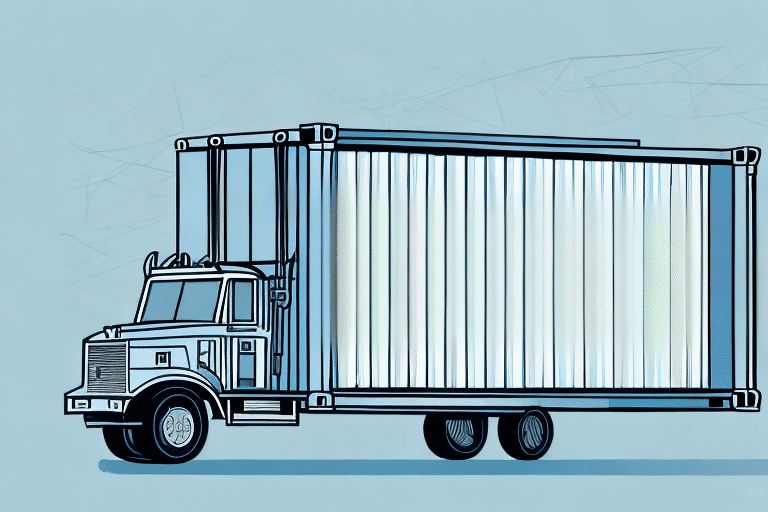Effective Planning for Oversized Shipping
Efficient and cost-effective oversized shipping begins with meticulous planning. Proper planning ensures that all necessary arrangements are in place, minimizing the risk of delays and unexpected costs.
Assessing Item Dimensions and Weight
Begin by accurately measuring the dimensions and weight of the item to determine the most suitable mode of transportation. Oversized items often exceed standard shipping limits, necessitating specialized carriers and equipment.
Securing Necessary Permits and Documentation
Oversized shipping typically requires specific permits and documentation, which vary by region and transportation method. Failure to obtain these can result in legal penalties, including fines and shipment delays. Refer to FMCSA regulations for comprehensive guidelines.
Timing and Logistics Coordination
Coordinating the timing of oversized shipments is crucial, especially when special arrangements like road closures or escorts are needed. Early planning helps in scheduling shipments during optimal times, reducing the likelihood of disruptions.
Choosing the Right Shipping Method
Selecting the appropriate transportation mode is vital for the safe and cost-effective delivery of oversized items. Each method offers distinct advantages and challenges.
Air Freight
Air shipping offers rapid delivery, making it ideal for time-sensitive shipments. However, it is generally more expensive and may have weight and size restrictions.
Sea Freight
Sea shipping is cost-effective for large or heavy items, especially for international transport. It accommodates oversized cargo but involves longer transit times and potential exposure to environmental factors.
Road Transportation
Road transport offers flexibility and is suitable for domestic shipments. While it is generally more affordable than air freight, it can be affected by traffic and weather conditions.
Rail Transportation
Rail shipping is an efficient option for long-distance domestic transport. It is environmentally friendly and cost-effective but may require additional transport methods to reach the final destination.
Packaging and Securing Oversized Items
Proper packaging is essential to protect oversized items during transit. The packaging must withstand handling and environmental conditions to prevent damage.
Choosing Appropriate Packaging Materials
Use high-quality, durable materials such as reinforced crates, pallets, and protective padding. Customized packaging solutions may be necessary for uniquely shaped or fragile items.
Securing the Cargo
Employ straps, braces, and other securing mechanisms to stabilize the cargo within the transport vehicle. Proper securing minimizes movement and reduces the risk of damage during transit.
Selecting a Reliable Shipping Carrier
Choosing the right carrier is crucial for ensuring the safe and timely delivery of oversized shipments. Evaluate carriers based on their expertise, reliability, and services offered.
Evaluating Carrier Expertise
Opt for carriers specializing in oversized shipping. Their experience and equipment are tailored to handle large and heavy items, ensuring safety and efficiency.
Insurance and Liability Coverage
Ensure the carrier provides comprehensive insurance coverage to protect against potential losses or damages. Review the terms and conditions to understand the extent of coverage.
Reviewing Customer Feedback and Track Record
Research customer reviews and the carrier's track record. Positive feedback and a history of reliable service are indicators of a trustworthy carrier.
Cost Management Strategies
Managing costs effectively is essential for maintaining profitability in oversized shipping. Implementing strategic measures can significantly reduce expenses.
Negotiating Competitive Rates
Engage in negotiations with multiple carriers to secure favorable rates. Providing detailed shipment information can enhance bargaining power and lead to better deals.
Leveraging Economies of Scale
For businesses with frequent oversized shipments, consolidating cargo can lead to substantial savings. Bulk shipping reduces per-unit costs and improves overall efficiency.
Implementing Cost-Saving Measures
Review the entire shipping process to identify areas where costs can be minimized without compromising quality. This may include optimizing packaging or selecting more efficient routes.
Navigating Regulations and Minimizing Risks
Compliance with regulations and risk management are critical components of oversized shipping. Adhering to legal requirements and mitigating potential risks ensures smooth operations.
Understanding Environmental Regulations
Stay informed about environmental regulations related to emissions, waste management, and transportation practices. Compliance helps avoid legal penalties and promotes sustainable operations.
Implementing Safety Protocols
Adopt rigorous safety measures to protect both the cargo and personnel involved in the shipping process. Regular training and adherence to industry standards enhance safety.
Managing Liability and Insurance
Maintain appropriate insurance coverage to safeguard against potential liabilities. Clear contractual agreements with carriers define responsibilities and protect all parties involved.
Leveraging Technology and Future Trends
Embracing technological advancements can streamline oversized shipping operations and enhance efficiency.
Advanced Tracking Systems
Utilize GPS and real-time tracking tools to monitor shipments. These technologies provide visibility into the cargo's location and status, facilitating proactive management.
Innovative Shipping Solutions
Explore emerging technologies such as automation, robotics, and blockchain to improve the shipping process. These innovations can reduce errors, enhance security, and increase transparency.
Future Trends in Oversized Shipping
Stay ahead by anticipating future industry trends, including the adoption of autonomous vehicles, sustainable shipping practices, and enhanced data analytics for better decision-making.
Conclusion
Handling oversized shipping efficiently and cost-effectively requires comprehensive planning, the right choice of shipping methods and carriers, meticulous packaging, and adherence to regulations. By implementing strategic cost management and leveraging technology, businesses can optimize their oversized shipping operations. Staying informed about industry trends and continuously improving processes will ensure long-term success and competitiveness in the evolving shipping landscape.






















